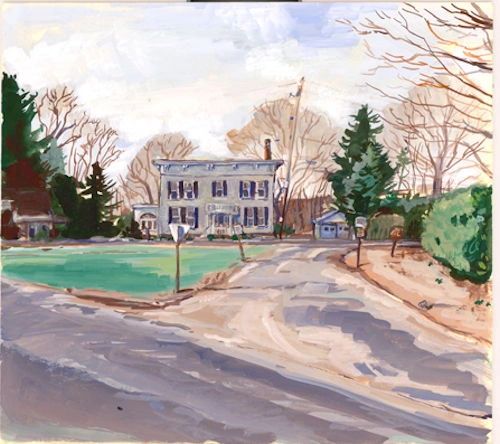Paintings: An Introduction

Just as is true for my illustration, I strongly believe that models are important for my painting. They give an authenticity that is not possible for me by means of imagination alone. Or, rather better to say that my imagination doesn’t get started without them! I use sketches made on the spot to help me really notice what is important about a place that I want to paint, especially how the various parts of the scene are related to each other—in terms of placement, proportion, relative size. I also take photos to use later to help me remember ephemeral effects of light and color.
When sketching landscapes, I look for natural framing devices—trees, buildings—to help anchor and structure my experience of that place. I also look for natural rhythms and proportions that connect parts. These help me to understand this particular slice of nature and its complexity; to put those parts all into some sort of relationship with each other. The world is a big place, after all—how else would I know where to begin?
When painting, I do not work photographically, but like to use a style which consists primarily of coordinated color patches. This sort of style is connected by most people with the Impressionists, but is actually much older. It is found in Byzantine mosaics, and in the work of such painters as Velazquez and Frans Hals. This style is extremely interesting because it requires that the viewer put the image together and interpret it in his or her mind and imagination. It involves the realization that the color patches are, indeed, color patches, but that they also, almost magically, can become something else, something in the real world. They are paradoxically both color patches and landscape—or still life objects, or facial features—at the same time. One knows that they cannot be both things at once, and yet they are. This is a point which is both attractive and endlessly fascinating.
Portraits, Animals & Still Lifes
George Washington. Oil on copper.


































